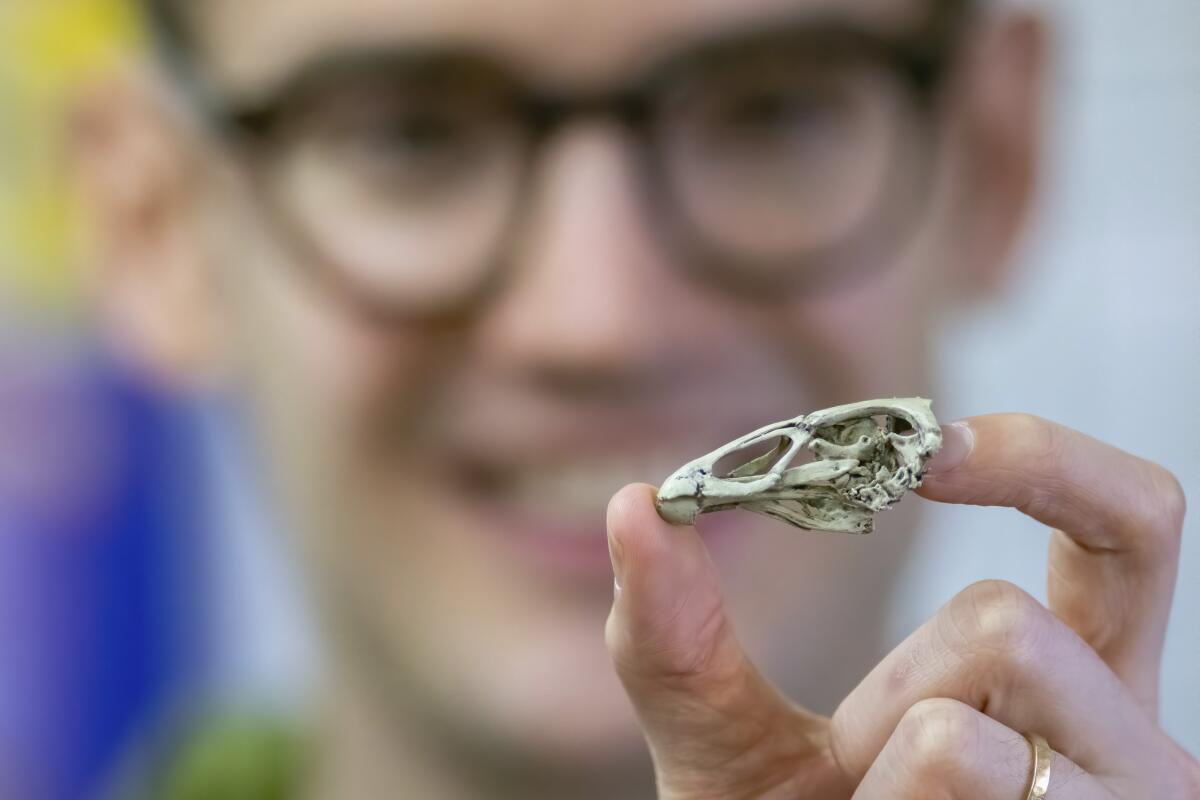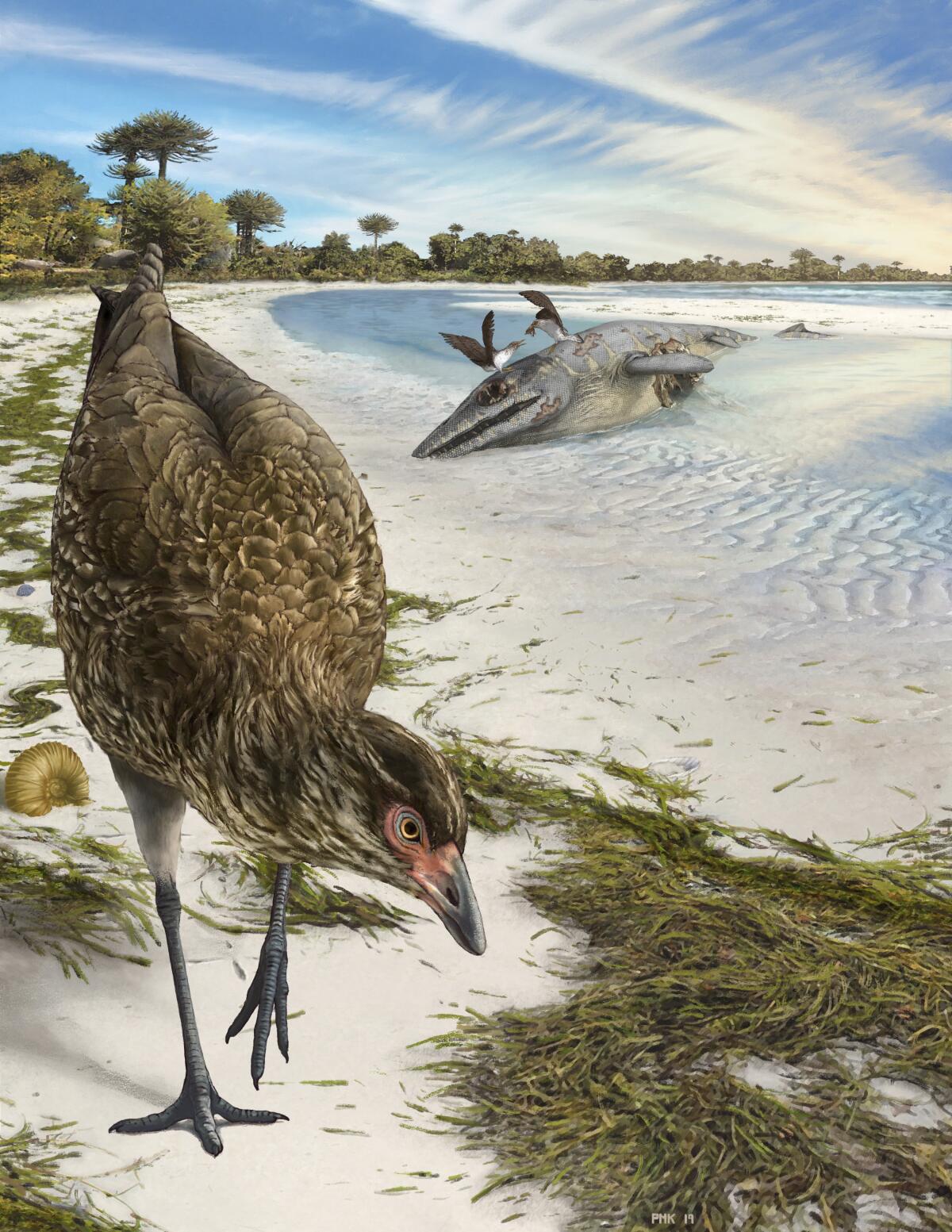‘Wonderchicken’ fossil reveals ancestor of today’s birds

- Share via
A tiny fossil skull nicknamed “Wonderchicken” is giving scientists a rare glimpse at early ancestors of today’s birds. It may be the oldest known fossil from this group.
With a face like those of today’s chickens and chicken-like birds and a back portion like that of living ducks and duck-like birds, Wonderchicken is “down near the bottom of the modern-bird family tree,” said Daniel Field of Cambridge University.
He and others announced the find in a report released Wednesday by the journal Nature. They named the creature Asteriornis maastrichtensis, but let’s stick with Wonderchicken.
Found in Belgium, it is some 66.7 million to 66.8 million years old. A previously reported Antarctic fossil find is about as old, but its precise age and place on the evolutionary tree are not clear. Field said the Belgian skull was slightly older.
It appeared as a block of broken rocks with some broken leg bones sticking out. After it was donated to a museum, Field tried CT scanning to get a better look at those bones. To his astonishment, the scanning revealed a well-preserved skull inside the rock “staring out of the computer screen right at us.”
The leg bones let researchers estimate the creature was the size of a very small duck, weighing only about 14 ounces (395 grams). Its legs were long and slender, and it was evidently a shore bird and could probably fly, Field said.

Wonderchicken lived just before the asteroid impact that’s blamed for killing off many species, most notably the giant dinosaurs. That suggests the evolution of the family tree for modern-day-birds was in a very early stage when the asteroid struck, Field said.
Close relatives of Wonderchicken survived the cataclysm, and the fossil itself shows some traits that have been proposed as beneficial for making it through, Field said. It was small, and its legs suggest it did not live in trees, an important factor since forests were thought to have been devastated by wildfires.
“It also probably paid to not be picky about what you are eating,” since there wasn’t much on the menu in the aftermath of the asteroid strike, Field said. Wonderchicken’s beak shows no signs of a specialized diet, he said.
Scientists unconnected to the research were enthusiastic.
Kevin Padian, a paleontologist at UC Berkeley who wrote a commentary about the study, said the fossil provided the best evidence yet of when and how the earliest ancestors of today’s birds evolved.
Genetic studies have suggested that those ancestors appeared tens of millions of years earlier than Wonderchicken, he said. But at this point the fossil record shows no support for that, and there’s no known fossil that is clearly from this lineage that predates Wonderchicken, he said.
Julia Clarke, a fossil-bird expert at the University of Texas at Austin, said the fossil had “a lot of information that can start to add to our picture of the earliest steps” in the proliferation of living birds species.
Fossils are snapshots, she said, and “right now our photo album has almost nothing in it” from this time period that relates to modern-day birds. “Any new picture is of key importance.”



